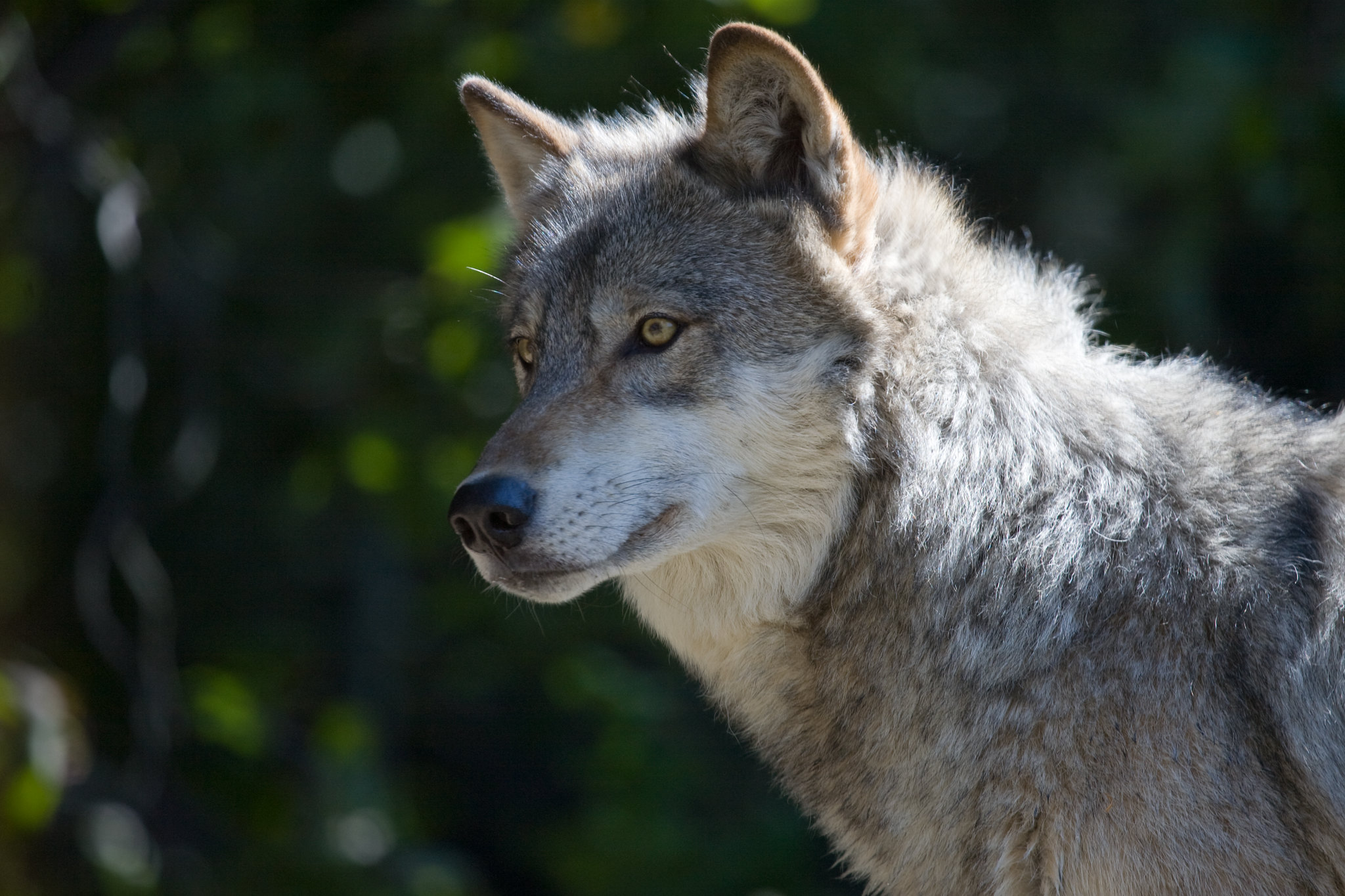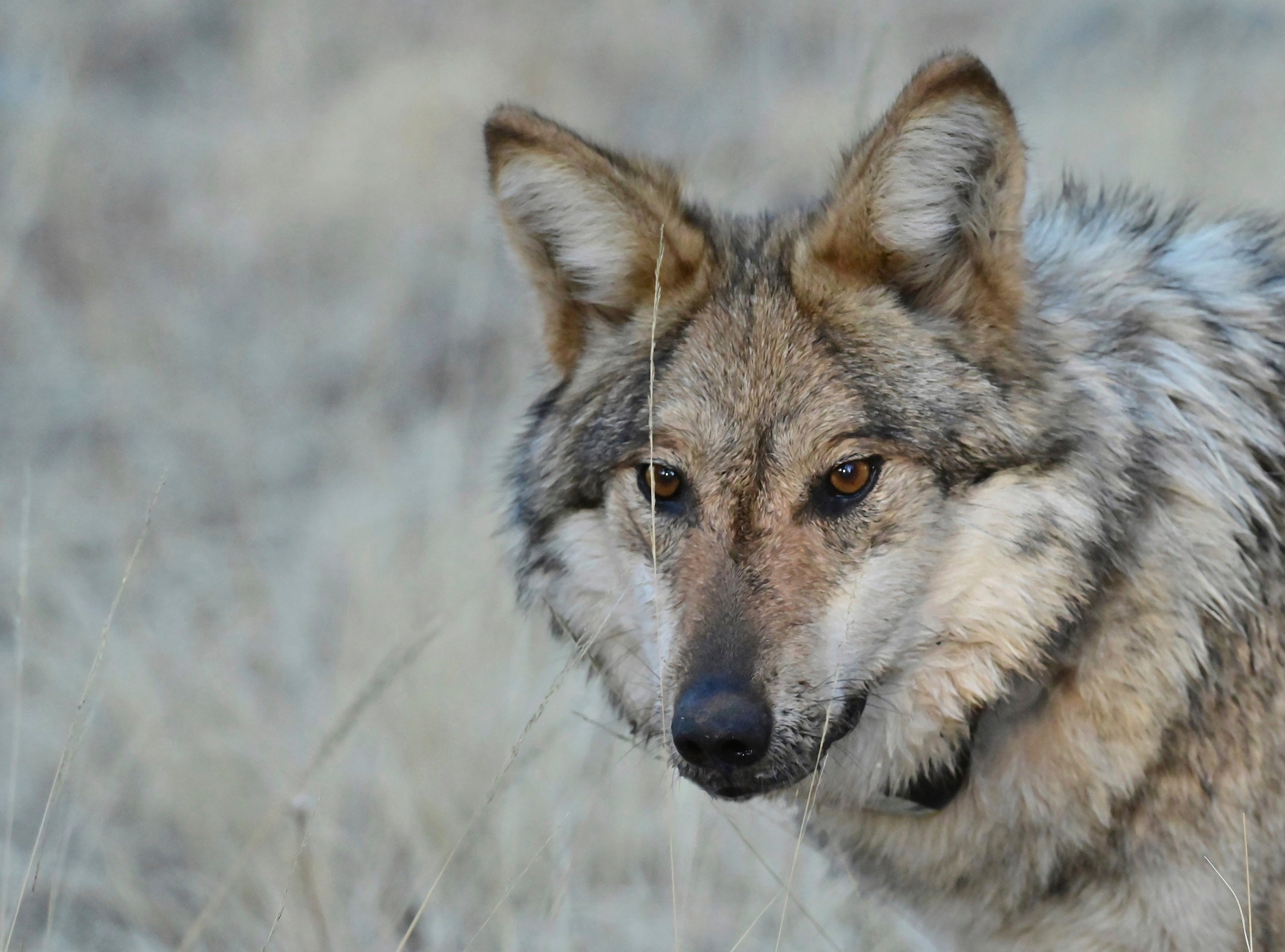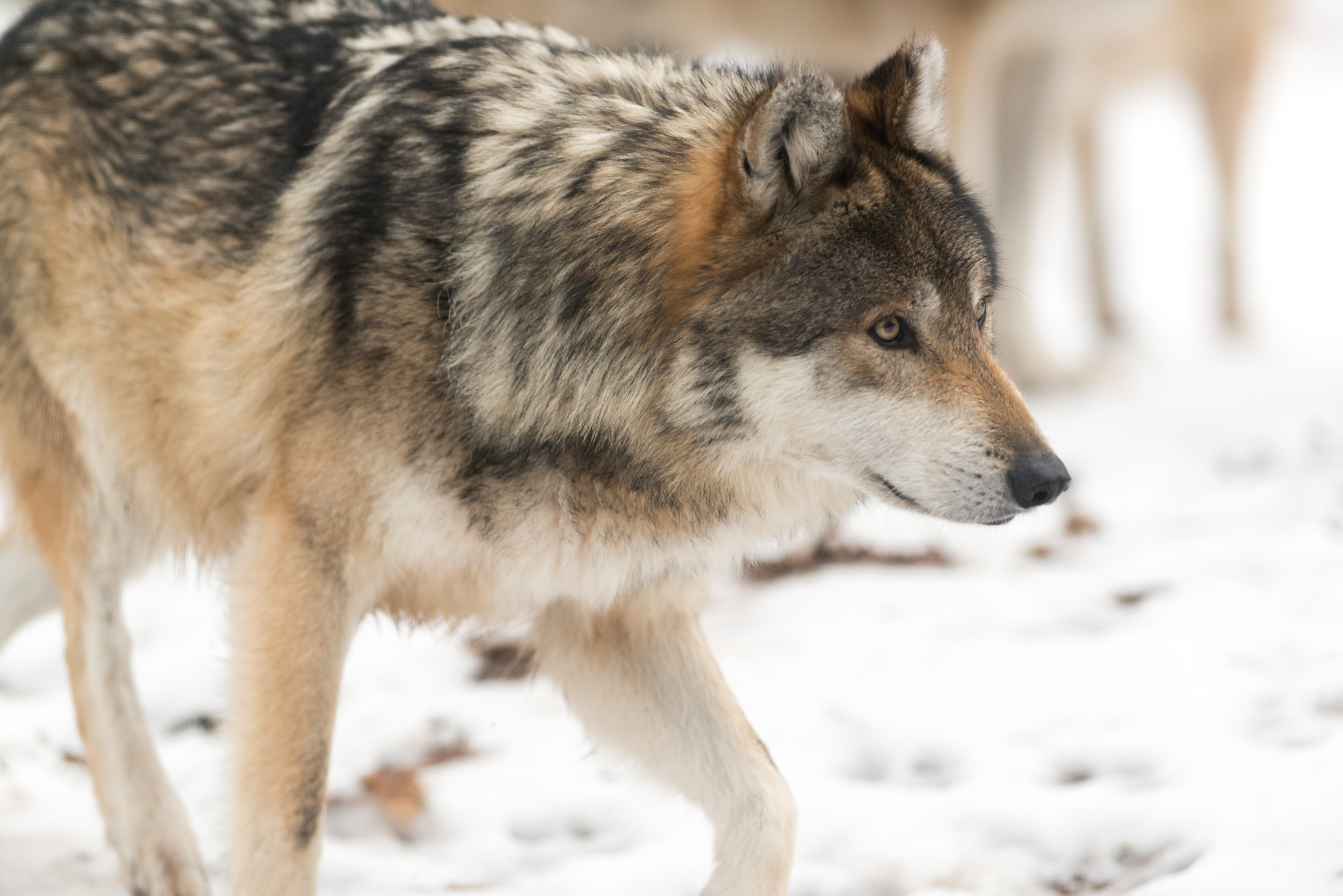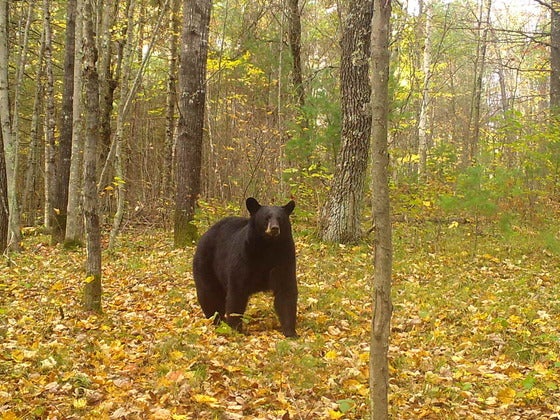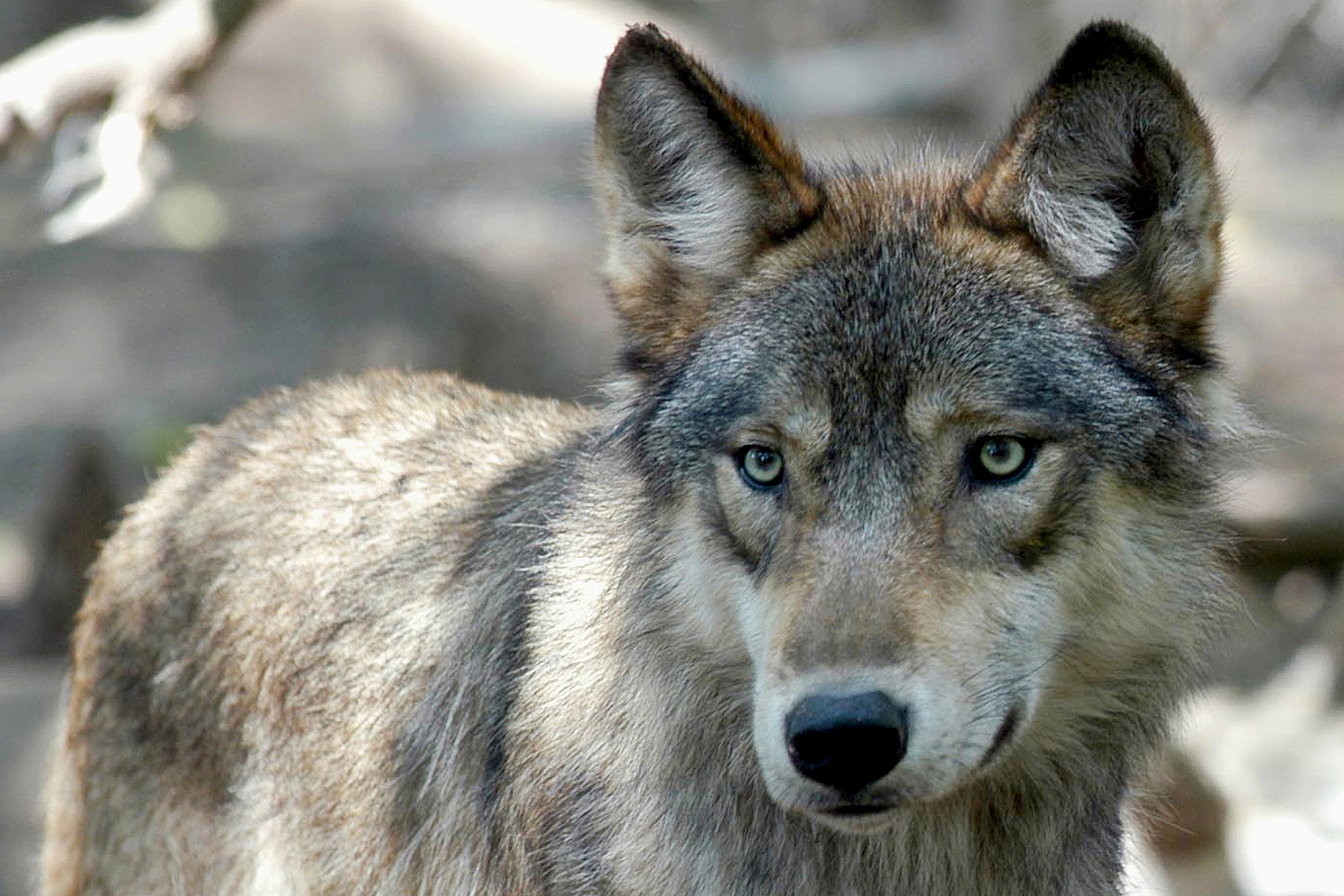The Wisconsin Department of Natural Resources is beginning to gather input on the future of wolf management and this fall’s wolf hunt. Members of the public have already begun to weigh in on the upcoming harvest.
The agency is providing an online questionnaire for people to share input on wolf management that will launch Thursday. The public comment period will remain open until May 15.
The agency is convening a wolf management plan committee that will begin meeting this summer to advise the DNR as the agency develops an updated wolf management plan. The DNR also held its first wolf harvest advisory committee meeting last week, hearing from people for the first time on this fall’s hunt.
News with a little more humanity
WPR’s “Wisconsin Today” newsletter keeps you connected to the state you love without feeling overwhelmed. No paywall. No agenda. No corporate filter.
Around 90 people submitted written comments or signed up to speak during the meeting. Those who spoke said the February wolf hunt was unethical, not based on science and a slaughter of wolves with several speakers calling for a “zero-quota,” or essentially no harvest this fall. Hunters harvested 218 wolves in February — nearly double the quota of 119 wolves for state-licensed hunters.
Sarah Bergstrom, who lives on a farm in rural Chippewa County, said she spent the last night of February’s wolf hunt trying to deter hunters from trespassing on their property. She claimed hounds could be heard in pursuit, noting the use of dogs isn’t allowed at night.
“That is not ethical hunting,” said Bergstrom. “If you hold another hunt in 2021, you won’t be able to close any zone fast enough. With 24 hours’ notice, wolf hunters will find ways to blow past any quota that you set.”
The agency was criticized for not closing the February season sooner as hunters neared the quota, but the DNR has said its hands were tied by a requirement in state law to provide 24-hours notice.
The DNR set an overall quota of 200 wolves that was split with Wisconsin’s Ojibwe tribes, which have declined to harvest wolves since they view the animal as a relative.
As a hunter, Kevin Renley said he was embarrassed by the February hunt. Renley, who owns land in Sawyer County, said wolves didn’t stand a chance with 1,548 permits that were awarded and no timely way to shut down the season. He supports holding no harvest this fall.
“Until we figure out what the hell we did the last February,” said Renley.
Representatives of the Humane Society of the United States and Wisconsin Animal Protection Society also said they preferred no harvest, adding it’s unclear what impact the February hunt had on the wolf population.
Hunters on the committee pushed back against those remarks, including Matt Lallemont, an associate director with the Wisconsin Wildlife Federation. He said the February harvest was close to the DNR’s overall quota.
“We haven’t significantly impacted our population,” said Lallemont. “And having a fall harvest, I don’t believe we’ll have a negative impact as well.”
The number of wolves in Wisconsin grew from just 25 animals in 1980 to 1,195 wolves prior to the February wolf hunt, according to the DNR. As the wolf population has grown, farmers and hunters have reported increasing conflicts with wolves. Since 2017, the number of wolf depredation complaints has grown from 111 to 148 complaints in 2020. The number of verified attacks increased from 82 in 2019 to 98 confirmed depredations last year.
Committee member Peter David, wildlife biologist with the Great Lakes Indian Fish and Wildlife Commission, said there are real concerns related to livestock. But he added that a recreational hunt is a poor way to manage the population. He noted that Ojibwe culture views killing wildlife through the lens of taking only what one needs.
“Whatever quota recommendations this committee ends up making need to be legitimately justified,” said David.
Committee member Adrian Wydeven, who serves as Wisconsin Green Fire’s wildlife co-chair, said the committee should be cautious as it moves forward with setting a quota for the fall harvest.
“We need to set a very conservative quota because there’s going to be high levels of uncertainty in some of the data that we’ll be using,” said Wydeven.
Part of the reason for the uncertainty surrounding the wolf population is that much of the tracking data was collected in surveys prior to the February wolf hunt.
In an interview Tuesday, DNR large carnivore specialist Randy Johnson said the agency will be developing a pre-hunt estimate of the wolf population and then incorporate the effects of the harvest. Johnson said that could include a breakdown of the sex, age and distribution of wolves harvested to get a sense of the hunt’s impact on breeding.
The DNR’s harvest report found 60 percent of wolves killed during the hunt were not of breeding age. Nearly 40 percent were adult wolves, of which 38 wolves were adult females at the time of harvest. Johnson said it’s fair to assume that at least half of those 38 wolves were likely pregnant.
“The other confounding factor here is just because a female is an adult, it doesn’t mean she was the breeder of a pack,” said Johnson.
The report also found four wolves were illegally taken during the harvest, which were presented at registration. The agency detected 16 illegal killings of wolves from April 2019 to April of last year. Research has shown that illegal kills account for around 9 percent of deaths each year. Johnson said the DNR also considers illegal kills when developing harvest quotas.
The agency’s goal is to make no significant changes to the wolf population until a new wolf management plan is approved. The state’s outdated 1999 wolf management plan set a goal of 350 wolves in Wisconsin. Johnson said the DNR would not seek to bring the population down to that level in a single year, noting that figure was never intended to be a population target.
“We just want to have a season to kind of get us to the new plan, and then let the new plan kick in,” said Johnson.
The agency is still accepting applications from a variety of stakeholder groups for those looking to serve on the DNR’s wolf management plan committee. Once formed, the committee will hold a series of four meetings beginning in July to discuss recommendations for updating that plan. The agency hopes to have a draft available based on science and input from tribes and the public in February. A final plan will be submitted to the Natural Resources Board by June of next year.
The wolf harvest advisory committee plans to develop and set a quota for the fall harvest at its next meeting in late May after reviewing the DNR’s population analysis, harvest report and public input.
The Wisconsin Natural Resources Board is set to decide whether to approve a public hearing on Wednesday to move forward with proposed rules for updating wolf harvest regulations.
Wisconsin Public Radio, © Copyright 2025, Board of Regents of the University of Wisconsin System and Wisconsin Educational Communications Board.

